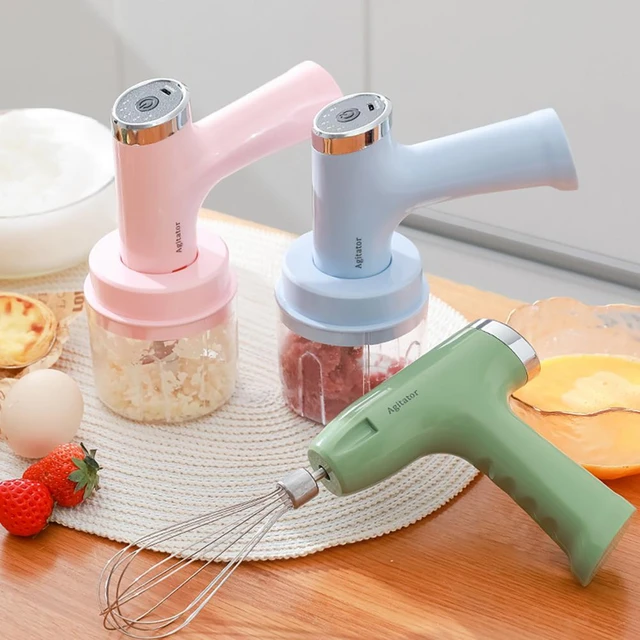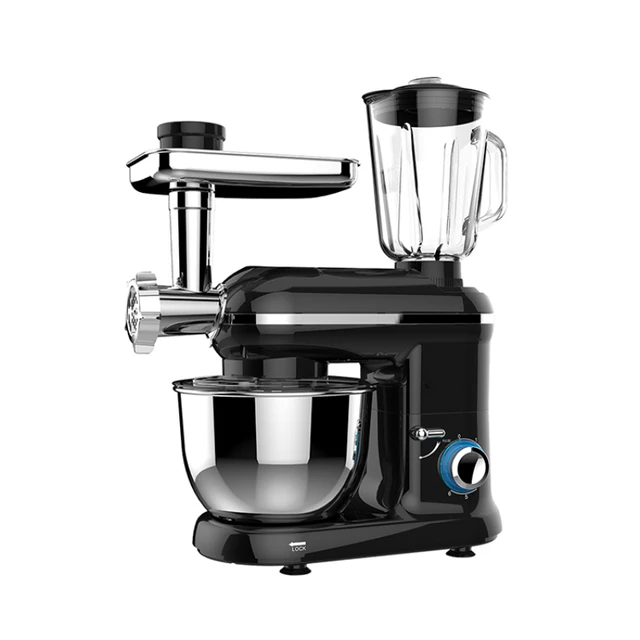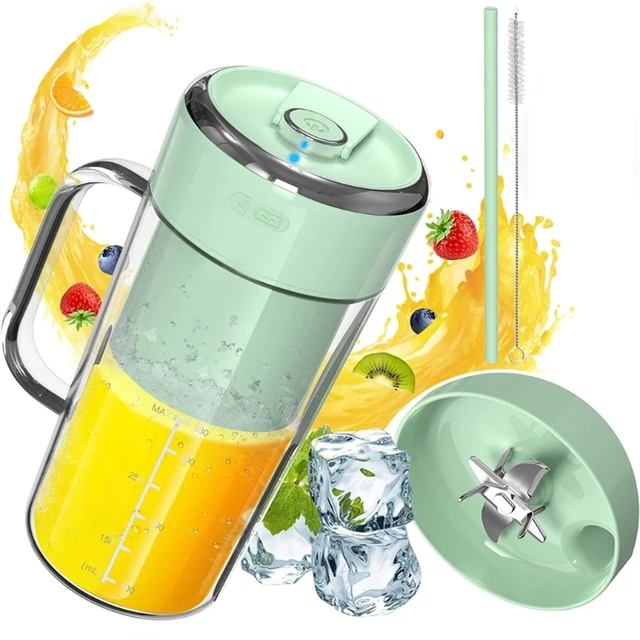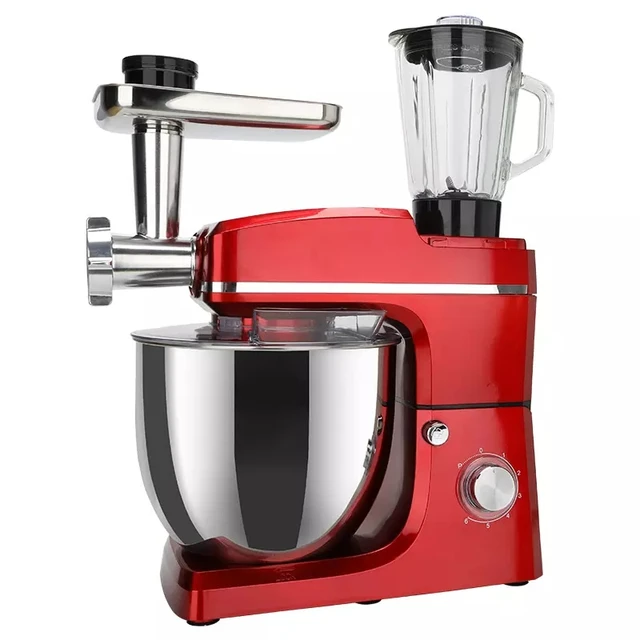
Introduction: food processor vs blender
Blenders and food processors are essential kitchen appliances that aid in food preparation and culinary endeavors. While both appliances have their merits, determining which one is better for your needs depends on various factors. In this guide, we will compare blenders and food processors across key aspects such as functionality, versatility, tasks they excel at, and considerations for purchasing. By understanding the unique features and benefits of blenders and food processors, you can make an informed decision and select food processor vs blender that best suits your specific kitchen requirements.

Key Features of Blenders
Blenders are versatile appliances designed primarily for liquid-based tasks. Therefore, understanding their key features is crucial.
Powerful Blending
Blenders are known for their powerful motors, which make them ideal for blending smoothies, soups, and sauces. The high-speed blades efficiently liquefy fruits, vegetables, and other ingredients, creating a smooth consistency. Additionally, many blenders come with variable speed settings and pulse functions, offering greater control over the texture of the final product. Consequently, the powerful blending capabilities make blenders an excellent choice for liquid-based recipes. Therefore, recognizing these key features highlights the importance of having a blender in your kitchen.
Versatility and Convenience
Blenders often come with various attachments and accessories, enhancing their versatility. From blending cups for smoothies on-the-go to large pitchers for family meals, these accessories cater to a wide range of needs. Moreover, blenders are generally easier to clean, with many parts being dishwasher-safe. Consequently, their versatility and convenience make blenders a popular choice for busy households. Therefore, understanding these aspects underscores why a blender can be an invaluable kitchen appliance.
Key Features of Food Processors
Food processors excel in tasks that require chopping, slicing, and grating. Therefore, exploring their key features is essential.
Multifunctional Capabilities
One of the standout features of food processors is their multifunctional capabilities. Equipped with various blades and discs, food processors can chop vegetables, slice fruits, grate cheese, and even knead dough. The large processing bowl accommodates significant quantities of ingredients, making it ideal for bulk food preparation. Consequently, food processors are perfect for tasks that involve a lot of manual labor. Therefore, recognizing these multifunctional capabilities highlights the value of having a food processor in your kitchen.
Precision and Control
Food processors offer precise control over the size and texture of the ingredients. With pulse and speed settings, you can achieve the desired level of coarseness or fineness. This precision is particularly beneficial for recipes that require uniformly chopped or sliced ingredients. Additionally, food processors can handle tougher tasks like grinding nuts and seeds, which blenders may struggle with. Therefore, understanding the precision and control that food processors offer can enhance your culinary creations.
Ideal Uses for food processor vs blender
While both appliances have their strengths, understanding their ideal uses can help you decide which one to choose. Therefore, exploring these ideal uses is crucial.
Best Uses for Blenders
Blenders are best suited for tasks that involve liquids or require a smooth consistency. Making smoothies, milkshakes, and pureed soups are classic examples of blender-friendly tasks. Additionally, blenders are excellent for emulsifying salad dressings and sauces, creating frothy beverages, and crushing ice for cocktails. Consequently, if your primary focus is on liquid-based recipes, a blender is an ideal choice. Therefore, recognizing the best uses for blenders can guide your decision-making process.
Best Uses for Food Processors
Food processors shine in tasks that require chopping, slicing, grating, and mixing dense ingredients. Preparing vegetables for salads, grating cheese, slicing fruits, and making pie crusts are some examples. Moreover, food processors can handle more labor-intensive tasks like kneading dough and grinding nuts into butter. Consequently, if your culinary needs involve a lot of food preparation, a food processor is the way to go. Therefore, understanding the best uses for food processors can help you maximize your kitchen efficiency.
What is better a food processor vs blender?
Functionality and Primary Purpose
1.1. Blender Functionality
Blenders are primarily designed for blending, pureeing, and liquefying ingredients. They excel at creating smoothies, shakes, soups, sauces, and other liquid or semi-liquid preparations. Blenders blend all the ingredients together, including fiber-rich peels, seeds, and pulp, into a homogeneous mixture.
1.2. Food Processor Functionality
Food processors are designed for chopping, slicing, shredding, and kneading tasks. They offer a range of attachments and blades that allow for precise and controlled cutting techniques. Food processors are ideal for tasks such as making dough, slicing vegetables, shredding cheese, or preparing large quantities of ingredients.
Versatility and Multi-Functionality: food processor vs blender
2.1. Blender Versatility
While blenders have their primary function of blending, many models offer additional features and attachments that enhance their versatility. Some blenders come with blades suitable for chopping, grinding, or even making nut butter. They can also be used for mixing, emulsifying, and crushing ice. Blenders are versatile appliances that can handle a wide range of tasks beyond blending.
2.2. Food Processor Versatility
Food processors, by design, offer a high level of versatility. They come with various attachments and blades that can handle different tasks. Food processors can chop, slice, shred, grate, and even knead dough. They are indispensable for tasks that require precision and control, such as preparing salads, making coleslaw, or cutting vegetables of various thicknesses.

Tasks Each Appliance Excels At
3.1. Blending and Pureeing
Blenders are the clear winner when it comes to blending and pureeing tasks. They create smooth and consistent textures for smoothies, soups, sauces, and dressings. Blenders can easily handle both soft and tough ingredients, ensuring a homogeneous mixture without leaving any chunks behind.
3.2. Chopping and Slicing
Food processors excel in chopping and slicing tasks. They are specifically designed to handle larger quantities of ingredients and offer attachments that provide precise and even cuts. Food processors are ideal for tasks such as chopping onions, slicing potatoes for gratin, or preparing ingredients for stir-fries or stews.
3.3. Shredding and Grating
Food processors are also superior when it comes to shredding and grating tasks. Whether it’s shredding cheese, grating vegetables for slaw, or making breadcrumbs, the attachments and blades of a food processor provide efficient and consistent results.
Considerations for Purchasing
4.1. Capacity and Size
Blenders and food processors come in various sizes and capacities. Consider the volume of ingredients you typically work with and choose an appliance that suits your needs. Blenders generally have smaller capacities compared to food processors, making them more suitable for single servings or smaller quantities.
4.2. Power and Motor Strength
The power and motor strength of the appliance are crucial for its performance. Blenders require enough power to blend tough ingredients, crush ice, or grind nuts. Food processors need a strong motor to handle slicing, chopping, and shredding tasks. Look for appliances with sufficient power to ensure efficient and effective processing.
4.3. Attachments and Accessories
Consider the attachments and accessories that come with the appliance. Blenders may offer additional blades for chopping or grinding, while food processors often come with various slicing and shredding discs. Evaluate your specific needs and choose an appliance that provides the necessary attachments for your desired tasks.
4.4. Cleanup and Maintenance
Ease of cleaning is an important consideration. Look for appliances with detachable parts that are dishwasher-safe or easy to clean by hand. Consider the design of the appliance and accessibility to its components, as well as the sharpness and durability of the blades, which may require occasional maintenance or replacement.

Space and Budget Considerations
5.1. Kitchen Space
Evaluate the available space in your kitchen before purchasing an appliance. Blenders are generally more compact and take up less counter space than food processors. If you have limited kitchen space, a blender may be the better option.
5.2. Budget
Consider your budget when choosing between a blender and a food processor. Blenders tend to be more affordable, with a wide range of options available at different price points. Food processors, especially those with more advanced features and attachments, may be pricier. Determine your budget and select an appliance that offers the necessary features within your price range.
Health Considerations
6.1. Retention of Fiber and Nutrients
Blenders retain the fiber content of fruits and vegetables, as they blend the whole ingredients, including peels, seeds, and pulp. This ensures that the fiber, vitamins, minerals, and other beneficial compounds are consumed along with the blended mixture. Fiber is essential for digestive health, promoting satiety, regulating blood sugar levels, and maintaining a healthy gut.
6.2. Nutrient Extraction and Absorption
Food processors, while efficient in chopping and slicing, do not retain the fiber content. However, they still allow for nutrient extraction and absorption, as the ingredients are broken down into smaller pieces. The nutrients are released and absorbed by the body, albeit without the accompanying fiber.

Speed and Convenience
7.1. Blenders: Quick and Convenient
Blenders are generally quicker and more convenient to use. They require minimal setup and have straightforward operations, making them ideal for busy individuals or those with limited time in the kitchen. Blending ingredients into smoothies, soups, or sauces usually takes only a matter of minutes.
7.2. Food Processors: Time-Intensive Tasks
Food processors, on the other hand, may take longer to set up and operate due to the different attachments and tasks involved. Chopping, slicing, or shredding larger quantities of ingredients can be more time-consuming, especially for intricate or precise cuts.
Noise Level
8.1. Blenders: Noise During Operation
Blenders tend to produce more noise during operation, especially when blending tougher or frozen ingredients. The high-speed blades produce vibrations and noise as they break down the ingredients. This may be a consideration if you prefer a quieter cooking environment.
8.2. Food Processors: Variable Noise Levels
Food processors can also generate noise, but the intensity varies depending on the specific task. Chopping or shredding may produce noise, but it is typically less sustained compared to blending. Some food processors come with noise-dampening features to minimize the sound during operation.

Conclusion
Deciding between a blender and a food processor depends on your specific kitchen needs, desired functionalities, and the type of tasks you frequently perform. Blenders are ideal for blending, pureeing, and fluid-based preparations, offering versatility with additional features and attachments. Food processors excel in chopping, slicing, shredding, and kneading tasks, providing precision and control. Consider factors such as functionality, versatility, the tasks each appliance excels at, capacity, power, attachments, cleanup, kitchen space, and budget when making your decision. Ultimately, the choice between a blender and a food processor should align with your specific culinary preferences, requirements, and the tasks you frequently undertake in the kitchen in 2024.